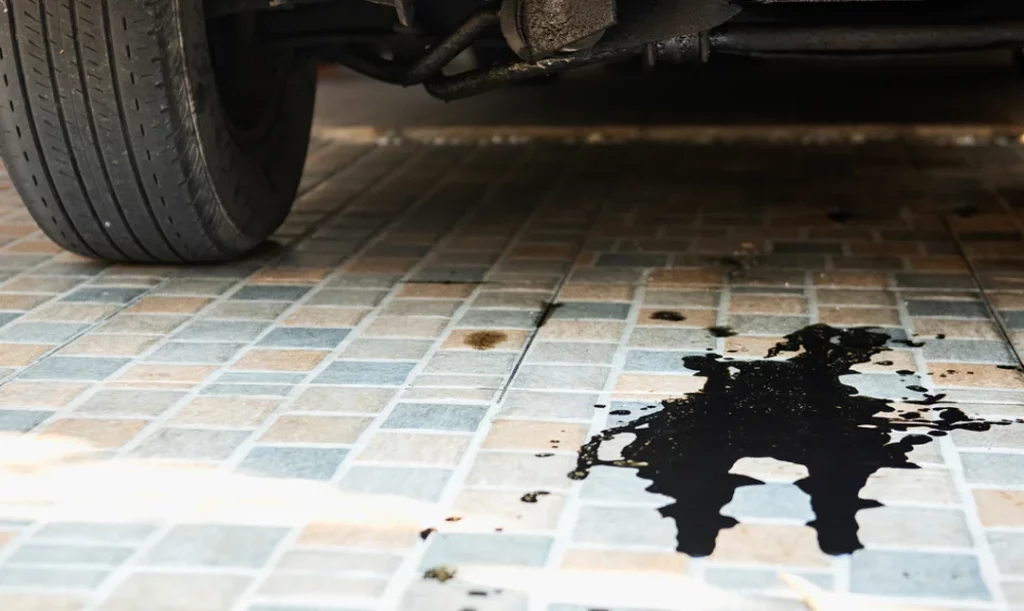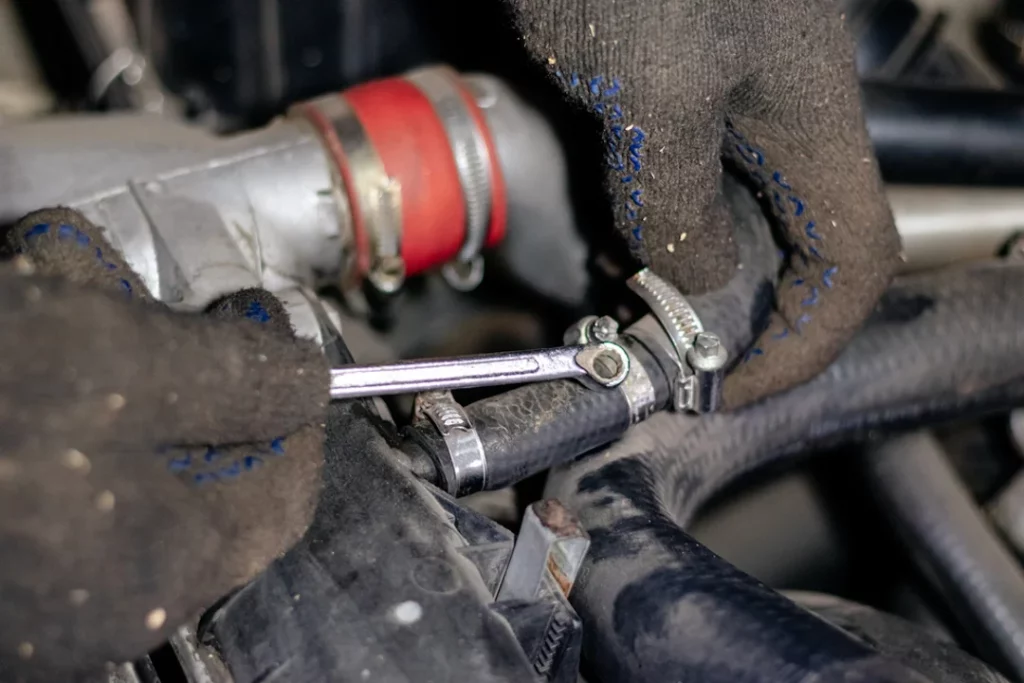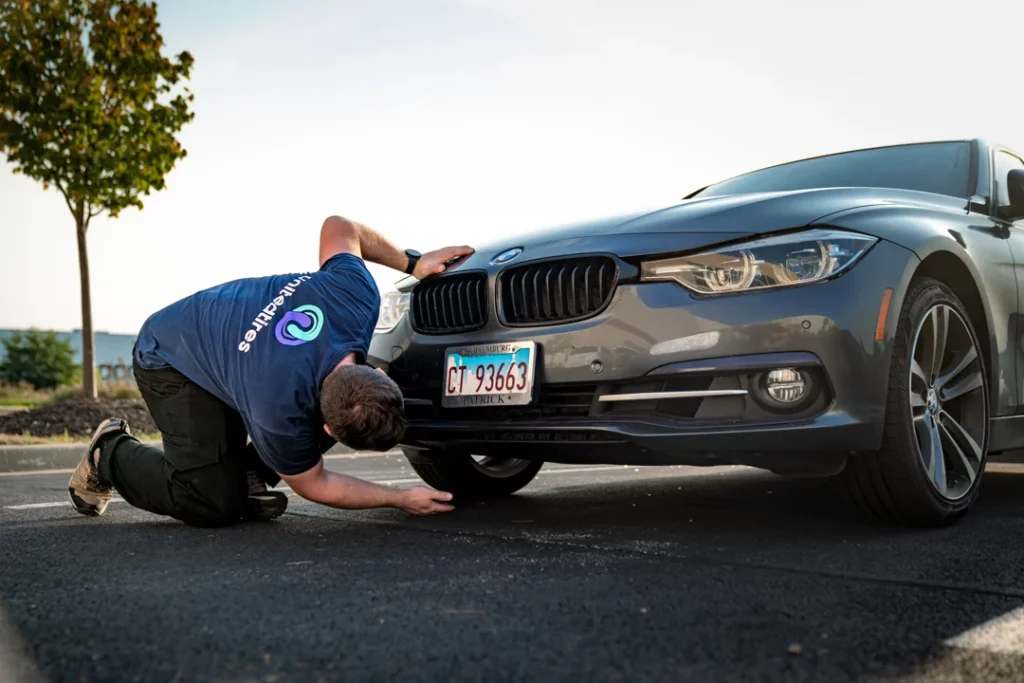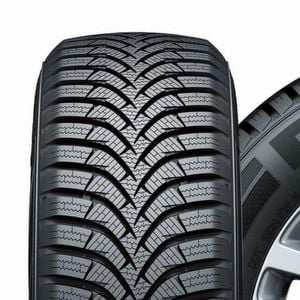Last Updated on 26.09.2024 by hrushetskyy

Finding a puddle of oil under your car can be very alarming! Where is the leak coming from, and is it something serious? Oil leaks can happen for various reasons, and while you might have an easy-to-fix problem, pinpointing the exact cause may require a professional. Read on to understand why your car might be leaking oil, what you can do about it, and when to seek professional advice.
Common causes of oil leaks
There are a lot of reasons you’re seeing oil leaking from your vehicle. These range from the minor to the more serious and include:
Poor maintenance

If you don’t take your car in for regular maintenance checks, problems can easily occur. Regular upkeep is key to preventing sludge buildup, which happens when oil oxidizes and thickens. This gunky residue can clog oil passages and it can lead to engine oil leaks.
Worn or damaged seals and gaskets
Over time, the gaskets and seals in your engine, like the valve cover gasket or oil pan gasket, can wear out. Common culprits for car engine oil leaks include the oil filter, front and rear seals, and the timing gear cover.
High crankcase pressure
If the pressure inside your engine’s crankcase gets too high—often due to a faulty Positive Crankcase Ventilation (PCV) system—it can push oil out through seals and joints that would normally hold in the oil.
Leaking oil cooler
If your vehicle has an external oil cooler, motor oil leaks can happen in the cooler or its lines. If this is the source of the leak, the cooler may need to be repaired or replaced.
Damaged hoses

Rubber hoses, particularly those affected by electrochemical degradation (ECD), can develop cracks, which can then let your engine oil leak out. ECD takes place when a chemical reaction between coolant and engine fittings weakens the rubber over time, and you can read more about it below.
Faulty clutch assembly
Leaks can also come from your clutch assembly. If you see oily streaks radiating from the hub shaft, this means you have a fluid leak that will likely require a clutch replacement.
Transmission issues
Sometimes, what looks like an engine oil leak is actually transmission fluid seeping out from loose bolts or worn components like the extension housing or torque converter.
As you can see, there are a lot of different reasons for engine oil leaks, some of which can be costly to repair, particularly if ignored. So fixing them quickly is very important, as it may prevent more serious problems and keep your vehicle running smoothly.
Identify the source of an engine oil leak
If you suspect your car is leaking motor oil, the first step is to find out where the leak is coming from.
Look under your car

Oil leaks can create a mess, which can be a sign that something is wrong. When you look underneath your car, check for road dirt mixed with fluid. Use good lighting to check for signs of drips and note where they are coming from.
Inspect the oil pan gasket and more
There are several places where oil may be leaking from. These include:
- Oil pan gasket: This is a frequent place for engine oil leaks. It might be a simple fix, where you refasten and tighten the pan bolts, but if this doesn’t fix the problem, you may need to replace the whole gasket.
- Extension housing: This is another place where motor oil can leak. You should check the bolts where the extension housing meets the transmission case. If they are loose, make sure to tighten the bolts, which may solve the problem.
- Torque converter: If the leak is from your torque converter, it could be either an oil or transmission fluid leak, so make sure you check the fluid’s color to distinguish between engine oil and transmission fluid.
Check fluid color

Make sure you really have an oil leak, as other fluids could be leaking from your vehicle.
- Engine oil: Typically honey-colored or dark and greasy.
- Transmission fluid: Usually slippery and red.
- Coolant: Green or orange and sticky.
- Brake fluid: Clear or yellowish and slippery.
Inspect seals and gaskets
As mentioned above, seals and gaskets wear out over time and can often be the cause of a leak. You should check carefully for oily streaks around the clutch assembly or any seals. Damaged seals and gaskets, like the drive pinion seal or the valve cover gasket, can lead to leaks.
Look for wet spots
Once you think you know where the leak is coming from, you want to confirm it. The best way to do this is to clean the area around the suspected leak. Then, you can look for new wet spots that might indicate exactly where the oil is coming from.
Understanding electrochemical degradation (ECD) of hoses

One of the more common causes of oil leaks is a worn-out hose, often caused by ECD. This is a process that causes coolant hoses to break down over time due to a chemical reaction. Here’s what you need to know:
- ECD happens when the materials in the rubber hose, engine coolant, and engine fittings create a galvanic cell. This reaction causes small cracks in the hose, which can worsen over time.
- As these cracks grow, they can lead to larger issues, such as hoses leaking or bursting.
- High temperatures and vibrations can worsen ECD, especially in upper radiator hoses.
- Hoses affected by ECD may show rust stains around clamps and feel soft or mushy at the ends.
- To test for ECD, squeeze the hose and feel for inconsistencies. If you notice gaps or soft spots, the hose may be compromised.
Replacing hoses with signs of ECD can prevent an oil and coolant leak before it happens.
How to fix an oil leak

If you are able to identify the exact cause of your oil leak, it can be straightforward to fix, although you will probably need some mechanical know-how. Here’s a simple guide to get you started:
- Identify the leak: Look for mixed fluid and dirt under your car. Check common areas like the oil pan and seals. Pay attention to fluid colors to help identify the source.
- Preparation: Park on a flat surface and allow your engine to cool. Gather necessary tools, including wrenches, an oil filter wrench, and a drain pan.
- Steps to fix the leak:
- Oil pan gasket: If the leak is here, drain the old oil, remove the old gasket, clean the surfaces, and install a new gasket. Refill with fresh oil.
- Oil filter and drain plug: Ensure the oil filter and drain plug are tightened properly and replaced if necessary.
- Seals and gaskets: If the leak is caused by seals or gaskets, remove the affected component, clean the surfaces, and replace the seal or gasket.
- Testing: Start the engine and let it run until it reaches normal temperature. Check for leaks around the repaired areas.
- Disposal: Dispose of old oil and filters responsibly; many auto parts stores offer recycling services.
Hopefully, by following these steps, you can fix a simple oil leak. But if you’re ever unsure about tackling these repairs, it’s always a good idea to consult a professional mechanic. They are much more adept at finding the source of an oil leak quickly, so taking your car to a mechanic may save you a lot of time and stress.
What to do if you’re unsure

Working out exactly where an engine oil leak is coming from can be an uphill task. There are many places where engine oil leaks can occur, and many other types of leaking fluid can be confused with an oil leak, such as a power steering fluid leak or a brake fluid leak. This makes it a challenging problem to solve.
So, if you’re scratching your head over an oil leak or if the problem seems more than a simple fix, we recommend that you contact a professional mechanic. They are very experienced in finding the causes of leaks and know the most effective ways to repair them. Getting your car professionally repaired may well end up saving you time, hassle, and potential expenses down the road.
Preventive maintenance tips
While not all leaks can be prevented, many can be avoided by carrying out regular maintenance and keeping an eye on your vehicle. Here are some simple yet effective tips to help you avoid those messy leaks:
- Regular oil changes: Stick to your vehicle’s recommended oil change schedule. Fresh oil not only lubricates better but also reduces the buildup of sludge that can lead to leaks.
- Inspect hoses and gaskets: Make it a habit to check your rubber hoses and gaskets during routine maintenance. Look for signs of wear, such as cracks or swelling, and replace any parts that look damaged before they cause a more serious problem.
- Monitor fluid levels: Regularly check your oil and other fluid levels. If you notice a sudden drop in oil levels, it could indicate a leak that needs attention.
- Keep an eye on the engine bay: Periodically clean your engine bay to make it easier to spot any leaks. A clean engine can help you notice fresh oil spots more quickly so you can address any issues early.
- Follow manufacturer recommendations: Check your vehicle’s manual for maintenance schedules and recommendations, and always use the type of engine oil recommended by your manufacturer.
Frequently Asked Questions
Can I drive a car with an oil leak?
No, driving a car with an oil leak isn’t a good idea. While it might be tempting to ignore a small drip, leaks can lead to more serious issues like engine damage or overheating. If the leak is minor and you can keep a regular eye on your oil levels, you might manage for a short while, but it’s important to get any leaks fixed as soon as possible.
Is it expensive to fix an oil leak?
It may be expensive to fix an oil leak but the cost will vary widely depending on the source of the leak and the type of vehicle you have. Simple fixes, like replacing a worn oil filter or tightening a loose drain plug, can be relatively inexpensive, often ranging from $20 to $100 for parts. However, leaks caused by serious problems can cost from $200 to $1,000 or more to fix, especially if a lot of labor is involved. This is why regular maintenance is so important, as small repairs now may save you a lot in the future.
Why is my car leaking oil when parked?
If your car is leaking oil when parked, it could be due to several reasons, with the most common being worn-out seals or gaskets, a loose oil filter, or a damaged oil pan. Over time, engine components wear down, allowing oil to seep out, especially when the vehicle is parked up. Other culprits might include a faulty oil drain plug or a leak from the oil cooler. It’s important to check the size and color of the oil puddle to help diagnose the issue and to make sure it’s actually oil that’s leaking. If you’re unsure, it’s best to consult a mechanic. Catching an oil leak early can save you from more serious problems down the road!
What do I do if my oil is leaking?
If you notice your oil is leaking, the first step is to check your oil level using the dipstick—if it’s low, add some oil to prevent engine damage. Next, try to find where the leak is coming from by inspecting areas around the oil filter, drain plug, and gaskets. If you can identify the problem, you might be able to tighten a loose bolt or replace a damaged part yourself. However, if the leak seems significant or you’re unsure about fixing it, it’s best to contact a professional mechanic to diagnose and repair the issue.
Share the Knowledge
